

Ensuring that the teeth of every Canuck everywhere are in good condition is becoming a bigger priority with the NDP’s new Canadian Dental Care Program coming in to effect and expanding – but some people will be left out. This is where private dental coverage comes in to help you out.
This article is going to give you the 10 biggest dental insurance companies ranked by number of plan holders. We'll also give you an overview of the types of plans these providers offer so that you can find what works for you or advise your clients who to choose. These are the biggest and most stable companies in Canada that offer dental insurance plans.
When choosing a dental insurance plan, it helps to know what types of coverage are available. While the companies listed below are among the best, their dental plans, monthly premiums, and essential services can vary.
Most insurance providers also offer dental coverage as part of their health insurance and group benefits programs. That's separate figures for dental insurance are not readily available; the numbers below reflect this.
Here are the biggest dental insurance providers in Canada ranked by client size based on our research.

Headquarters: Toronto, ON
Number of plan holders: Over 27 million (supplementary health insurance); around 1 million mobile app users for its group benefits program
Manulife is recognized as the largest insurance company in Canada. The insurer is also a dental insurance provider that offers a wide range of policies. It is known to offer flexible plans and have a quick and efficient claims process. Manulife is also a top player with a global presence. It offers dental insurance coverage via its Flexcare group of plans, which includes DentalPlus plans.
Flexcare is a Manulife plan that ordinarily covers costs for extended health benefits that are not fully covered by provincial healthcare plans. This plan typically covers prescription drugs, vision care, and other health costs, but has a dental coverage component, DentalPlus.
This plan covers both preventive and basic dental care. The reimbursement that this plan provides is 70 percent of the first $575 to $1,200 of applicable dental expenses every year. Coverage includes scaling, polishing, bitewing X-rays, recall exams, fillings, and some basic dental procedures. Major dental procedures, however, are covered at lower rates, which is 60 percent of annual maximum limits.
This provides higher coverage at around 70 percent of the first $1,200 yearly. It includes coverage for major dental procedures with higher maximum payout limits.
This is part of Manulife’s special services, which simplifies access to their services by doing away with medical underwriting requirements.
Average monthly premiums: Depending on the plans and coverage level, clients can expect to pay around $70 to $100 per month for their dental insurance via Manulife.

Headquarters: Toronto, ON
Number of plan holders: Around 6 million (all lines, including health insurance)
TD is a leading insurer and business unit of Toronto-Dominion (TD) Bank, one of the Big Five Banks in Canada. Their dental plans are offered in partnership with Green Shield Canada (GSC). Refer to the section about GSC to know more about the dental insurance plans they offer. In terms of the premiums, TD Insurance’s dental coverage starts at around $32 a month.

Headquarters: Lévis, QC
Number of plan holders: Over 5 million (life & health); 500,000+ (group benefits)
Desjardins is a major player in the Canadian insurance industry, with dental insurance having a small part in its overall business. It offers dental coverage as part of its health insurance packages, enabling customers to have flexible plans with basic and enhanced options for a broad range of dental services.
Desjardins' basic plan covers routine dental services like recall examinations, complete examinations, fluoride treatment, teeth cleaning, and x-rays. This plan typically covers 80 percent of the costs. Dental treatments related to accidents, simple extractions, root canal treatments, and fillings are also covered at this rate.
Preventive and basic dental care can be accessed immediately. Desjardins is perhaps one of the few providers of dental insurance with no waiting period for these services.
This covers 100 percent of the costs of preventive dental procedures like exams and cleanings. The waiting periods between these services are typically spaced depending on the service. For instance, exams are every 24 months, while cleanings are every six months.
Desjardins' Enhanced plan includes coverage for advanced treatments like wisdom tooth removal, dentures, root canals, gum grafting, bridges, crowns, and orthodontic procedures and care. Orthodontic care in this plan comes with a lifetime maximum benefit.
If hospitalization is necessary for a dental treatment, the plan covers the cost of a semi-private hospital room. Note that major procedures and treatments covered by this plan have a 24-month waiting period.
Those considering Desjardins for their dental coverage should also note that these plans cannot be purchased as standalone coverage but part of broader coverage. Couples, individuals, families, and single-parent families are eligible for these plans, but they must also meet age eligibility requirements and be aged 18 to 64.
Insureds can add their children into the plans, but they must be 21 years old or younger. Finally, enrollment into Desjardins plans requires participants to undergo medical underwriting and must participate in a provincial health insurance program.
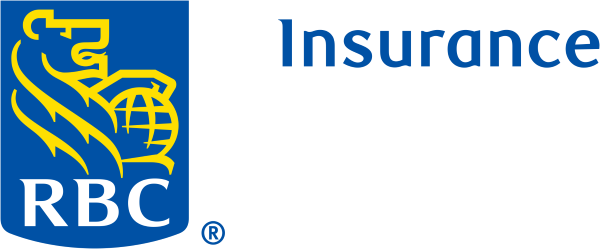
Headquarters: Mississauga, ON
Number of plan holders: 5 million (all lines globally, including health insurance)
Another big player in dental insurance in Canada is RBC Insurance, the insurance arm of Royal Bank of Canada, one of Canada’s Big Five Banks. RBC Insurance recently announced higher than expected net income, which can be taken as a sign that it is largely trusted by policyholders.
RBC Insurance offers dental insurance as part of its group health and dental benefit plans. This is typically composed of preventive, basic, and a few major dental procedures for families and employees.
As with most other dental insurance providers, RBC Insurance does not offer standalone dental plans, but rather, larger health insurance including dental coverage. There are a couple of types of coverage offered by the insurer:
This includes basic dental procedures like cleaning, recall exams, fillings, root canals, and emergency dental services.
This offers additional dental coverage benefits like orthodontic services and major restorative dental procedures. Orthodontic treatment coverage comes with a lifetime maximum of $1,000 per individual. There is usually a 24-month waiting period before the coverage goes into effect.
An important item to know about RBC Insurance is that the company does not provide dental insurance plans as standalone plans, nor does it provide plans to families or individuals. It only services companies to provide insurance as part of employee benefits.
Average monthly premiums: Those who are getting RBC Insurance for their workforce will have premiums calculated based on the coverage type, level, and demographics for their employees.
RBC health insurance can cost about $200 to $500 per employee per month for enhanced coverage, with dental insurance costing approximately $20 to $30 per month for each employee, depending on the plan's terms and conditions and other factors.
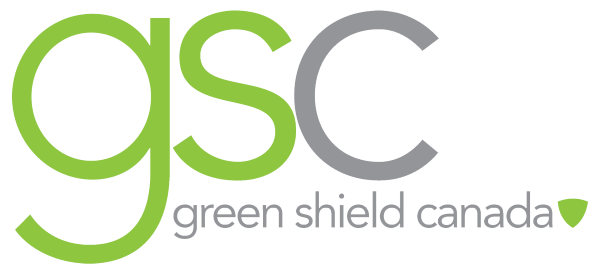
Headquarters: Windsor, ON
Number of plan holders: Over 4.6 million (health, dental, & pharmacy benefits)
Green Shield Canada or GSC is a Canadian insurer that specializes in health and dental benefits. They are among the few not-for-profit health and dental benefits providers that offer flexible and comprehensive individual health and dental plans to individuals and families. Their dental insurance options include:
These are plans designed for self-employed individuals, small business owners, freelancers, and contractual or part-time workers. ZONE plans offer eight different kinds of plans with varying coverage levels. Some of these plans have guaranteed acceptance after making the initial premium while others require medical underwriting.
Preventive dental care is reimbursed at 70 percent to 80 percent, while major services (including orthodontics) have specific waiting periods and limits.
These health insurance plans include dental coverage designed for individuals who are shifting away from group health benefits due to retirement, job loss, or career change. LINK plans offer four plan options with guaranteed approval if they are applied for within 90 days of group benefits ending. No medical exams required.
Average monthly premiums: Depending on age, coverage level, and plan type, monthly premiums can range from $142 to $207, increasing as the policyholder ages.

Headquarters: Halifax, NS
Number of plan holders: Around 3.8 million (health & disability)
Medavie Blue Cross is well-known as a dental insurer in Canada. It offers comprehensive dental plans that pay for preventive, basic, and major dental treatments for individuals and families alike. Operating as a not-for-profit organization, it manages health benefits for almost four million Canadians and handles claims amounting to $3.7 billion annually.
Blue Cross' lineup of dental insurance includes:
Entry plan – the lowest tier of their plans, Entry plans from Blue Cross reimburses 60 percent of the dental costs
Essential plan – this is the mid-tier plan that reimburses up to 70 percent of the costs for dental care
Enhanced plan – this is the highest-tiered plan, reimbursing up to 80 percent of the costs with varying annual maximums and waiting times, depending on the treatment (features common to all plans); waiting periods can range from six to 24 months, depending on the treatment
Orthodontic treatments – coverage for braces for children and teenagers is available
Unique features: Blue Cross requires pre-authorization for major treatments like dental implants and bridges. In some clinics, direct billing is used to streamline the claims process. Plans are available in all Canadian provinces, with some modifications to fit local rules and regulations.
Average monthly premiums: Blue Cross monthly premiums vary depending on the number of insureds (singles, couples, or families), the level and type of coverage, and the province. Here’s what different insureds can expect to pay on average for Blue Cross premiums:
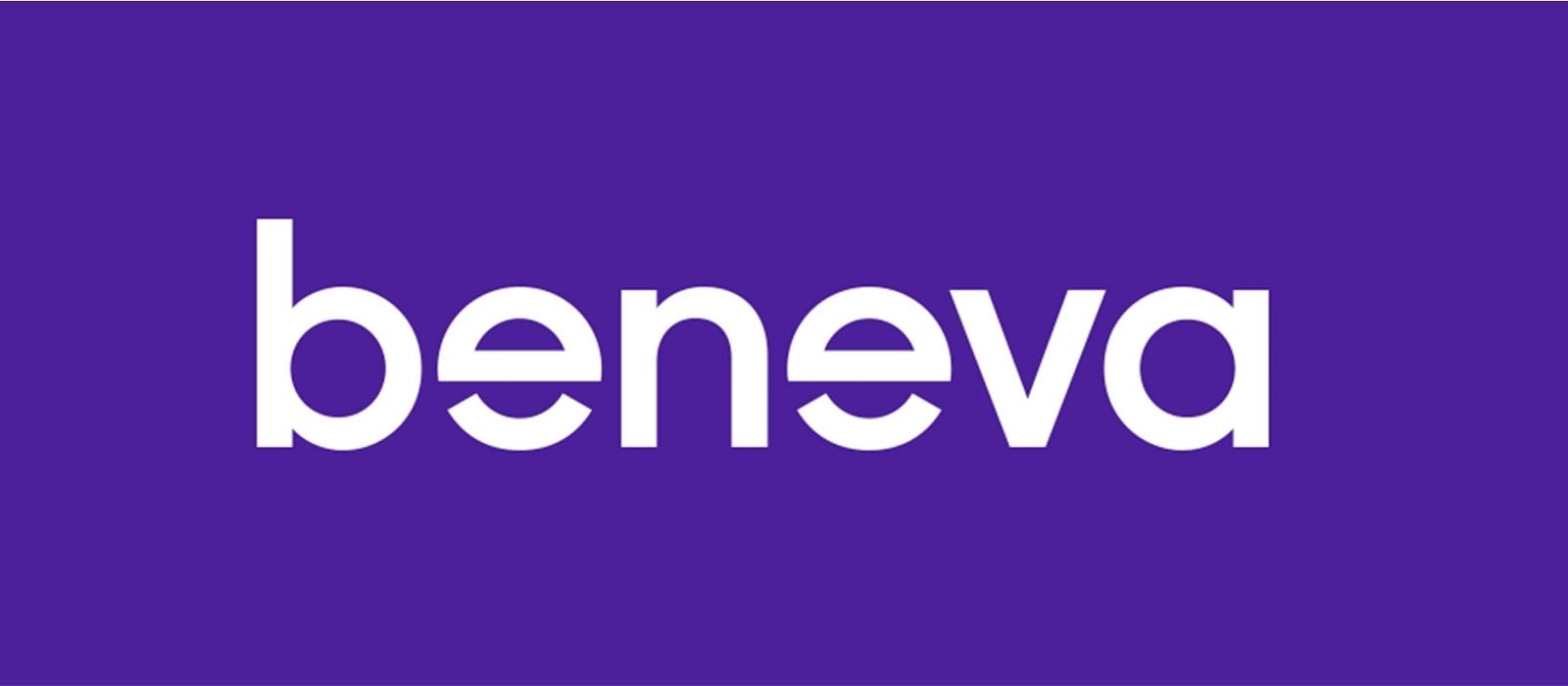
Headquarters: Québec, QC
Number of plan holders: Around 3.5 million (all lines, including health insurance)
Beneva is a major player in the Québec and Ontario insurance markets and was created via a merger between La Capitale and SSQ Insurance. It is also the largest mutual insurer in Canada. Beneva focuses on providing insurance and financial services with an emphasis on community values and personalized customer care. Beneva mainly provides health insurance and dental coverage to small businesses with 5 to 50 employees. These are Beneva’s dental plans:
Basic Coverage – this plan covers preventive and basic restorative treatments up to 80% of the cost. Members can have 1 dental exam every 9 months. The annual limit for coverage is $1,000 per year.
Supplemental Coverage – preventive and basic restorative treatments are similarly covered under this plan, with an additional cover for up to 80% of the costs of major restorative care. The annual limit for this coverage is also $1,000 per year.

Headquarters: Toronto, ON
Number of plan holders: Around 3.4 million (health insurance)
Sun Life provides comprehensive dental insurance plans. Their plans cover preventive, basic, and major dental services, including dental implants. Sun Life is well-regarded for its focus on offering integrated health insurance solutions. Sun Life offers several personal health insurance (PHI) plans with dental coverage of different levels:
Basic Plan – this covers 60 percent of preventive dental care procedures with a yearly limit that tops off at $500
Standard Plan – covers 70 percent of the cost for preventive and basic dental services, along with higher annual maximum limits
Enhanced Plan – the Enhanced Plan offers the most comprehensive dental insurance coverage, including major dental services and higher reimbursement rates; the premiums are the highest for this plan
Unique services: Sun Life’s various plans have the option of being integrated with broader health coverage options like vision care and prescription drug benefits.
Average monthly premiums: payments for Sun Life dental plans can average $30 to $50 a month for basic plans. More comprehensive plans can cost around $60 to $90 per month.
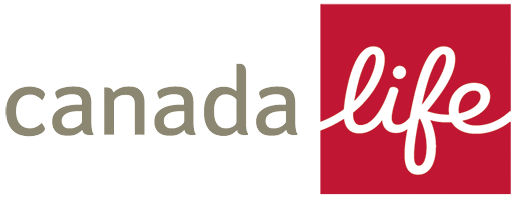
Headquarters: Toronto, ON
Number of plan holders: Around 1.4 million (dental insurance)
Canada Life is a key player in the country's dental insurance space, albeit without the global exposure of industry giants Manulife and Sun Life. This insurance company provides comprehensive dental plans with coverage for routine dental procedures, along with basic and major procedures like implants and orthodontics.
Canada Life has an extensive network of affiliated dentists and excellent customer service, giving it a significant spot in the dental insurance sector. Its plans include:
This is Canada Life’s main dental insurance plan that covers routine dental procedures like exams, cleanings, and major dental issues that need crowns, implants, and orthodontics for children. The major dental procedures under this plan generally have coverage limits of about $750 to $1,000 per insured per year.
This is included in dental plans offered by Canada Life, offering tailored benefits for federal retirees.
These dental plans are integrated as part of workplace benefits to provide affordable dental coverage that Canadians can rely on. Employers can choose from basic, major, and orthodontic dental services.
The plans usually cover dental and oral health procedures done by licensed dentists, like routine check-ups, preventive care, and major procedures. Employers can specify the percentage of dental costs covered or set a fixed limit per year for their employees. These limits can vary depending on the purchased group benefits.
As with Canada Life’s workplace group plans, this is an employer-funded dental benefit specifically for public service employees and their dependents. Coverage starts after three months of continuous employment and includes basic, major, and orthodontic procedures.
Average monthly premiums: Dental-only coverage with Canada Life can range from $50 to $160 per month, depending on the coverage type and level of the plan.
For group plans, the PSDCP can cost as little as $23 a month per person, while the Freedom to Choose plans can cost from $42 to $200 per month. Workplace dental plans can vary depending on employer arrangements and the cost of larger benefits packages.
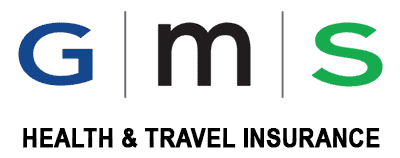
Headquarters: Regina, SK
Number of plan holders: 50,000+ (group health insurance)
Group Medical Services (GMS) is yet another insurance company providing customizable health and dental insurance plans. It was founded to offer accessible and affordable coverage and serves individuals, families, and businesses. Their plans are meant to be flexible enough for those with varying needs and budgets, with a focus on preventive care. GMS also offers tiered dental benefits with coverage levels that increase over time.
This plan covers preventive and basic dental care and services like cleaning, exams, and fillings. Coverage can vary and increase from:
year 1 – 75 percent basic services up to $500
year 2 – 80 percent basic and 50 percent major services up to $750
year 3 and beyond – 80 percent basic and 50 percent major services up to $1,000
Average monthly premium: about $65.75
This includes preventative, basic, and major dental procedures. Enhanced prescription drug coverage is also covered.
Average monthly premium: $85
This is GMS’s most comprehensive plan, covering orthodontics apart from basic, preventive, and major dental services. OmniPlan also covers private hospital rooms when necessary and has higher limits on various services.
Average monthly premium: $105.00 for individuals
Check out the list of the 10 largest insurance companies in Canada in this guide.
When it comes to dental and oral care, Canadians are mostly responsible for finding ways to finance different treatments and services. Here are four ways you can do so:
The reason is that general oral and dental health care is not covered under the Canada Health Act (CHA).
Here’s how coverage works in these four types of financing:
Most businesses have a deal in place with insurance providers, which charge them a set premium for each worker. This means that if you’re gainfully employed, you can likely access dental coverage through your employer.
Company-sponsored dental insurance often follows a fee-for-service model, where your employer pays for a portion – sometimes even all – of the cost, with you being responsible for covering the rest.
The payment process is also pretty straightforward:
You can also set up a payment schedule if you cannot settle the remaining bill directly.
Copayment, coinsurance. You may have to deal with a lot of buzzwords when taking out dental insurance. Don’t worry. You can find the meaning behind common industry jargon in this glossary of insurance terms.
Another thing you need to take note of is that Canada has strict rules about copayments. According to the Canadian Dental Association (CDA), the waiving of copayments is considered insurance fraud, which is a federal crime. Dentists who are found to be doing so face hefty fines and risk having their licenses revoked.
To prevent this from happening, you and your dentist are required to sign a claim form, stating the type of services provided and how much these cost. The insurer will then verify the expenses and pay their portion of the cost, with the expectation that you will cover yours.
If dental insurance is not for you, you can choose not to take out coverage and instead only pay for treatments and services when the need arises. You can just set aside a portion of your income in your dental emergency fund, which you can withdraw from when you need to visit your dentist.
Some dental services are covered through government-sponsored dental programs. The eligibility requirements and the types of services, however, vary depending on the province. If you want to know if you are qualified for these programs and what services are offered, you may want to talk to your local public health unit or visit their websites through the links below:
In private dental coverage, the amount you pay often depends on the type of plan you have. Most policies follow an 80:20 copayment system, also referred to as coinsurance. This is where the dental plan pays for 80% of the bill, with you covering the rest.
Some policies, however, follow this system mostly for basic preventive care such as teeth cleanings and x-rays. For more complex restorative treatments – including bridges and crowns – the split is usually 50:50.
Different dental insurance policies in Canada offer varying levels of coverage. Most basic plans pay out for preventative dental care services, which includes the following:
More extensive plans also cover restorative dental treatments such as:
Most comprehensive dental insurance plans also cover orthodontic procedures, which include braces and other corrective dental treatments. But just like many restorative services, copayments for orthodontic procedures follow a 50:50 model, meaning you will need to pay half of the bill.
Getting braces in Canada can be expensive as well. This is often the main reason why many Canadians are hesitant to get them even if the need arises. The cost primarily depends on the kind of braces you choose, with the average price ranging between $3,000 and $10,000.
While most health and dental insurance plans do not cover pre-existing conditions – including dental issues – there are some insurance providers that offer guaranteed acceptance plans that cover medical and dental conditions you may have before taking out the policy. These plans, however, may come with higher premiums.
Many dental insurance plans cover treatments and procedures deemed necessary by either a dentist or other medical professionals. This means cosmetic procedures such as teeth whitening and composite or tooth-colored fillings are excluded from coverage. Some policies also do not cover pre-existing conditions.
As mentioned, basic dental insurance plans limit coverage to preventative care, meaning you will need to pay for the full costs of restorative and orthodontic procedures.
Apart from exclusions, most dental insurance policies come with restrictions. Some plans limit access to preventative dental care services to once or twice a year. Others implement a sliding scale for reimbursement, which increases after the first year. For example:
Waiting periods also apply, usually ranging from three months for basic dental care to 24 months for restorative and orthodontic treatments. Insurance companies impose these wait times to discourage customers from taking out policies just to cover impending procedures.
One thing to remember is that the exclusions and restrictions vary between insurers, so it is still advisable for you to check your coverage limits with your dental insurance provider.
The recent creation of the Canadian Dental Care Program (CDCP) may cover some of the dental costs for eligible Canadians, but getting dental insurance from private insurers will still be worthwhile. This is true even though dentists helped craft the program and the CDCP will have expanded coverage.
While the CDCP helps cover some oral health care costs for those without dental insurance and family net incomes below $90,000, this is neither a free nor comprehensive dental insurance program. It only covers a part of essential dental services. Participants may still have to make copayments or pay added charges, depending on their income and the services they need.
Obtaining or keeping a private dental insurance policy is more cost-effective and ensures broader and more predictable dental coverage. Advise your clients or share this article with them to show the merits of maintaining or obtaining private dental insurance.
For the latest developments in the dental insurance space, visit our Life & Health Insurance News Section. Don't forget to bookmark this page for easy access to breaking news, expert analysis, and industry updates.
